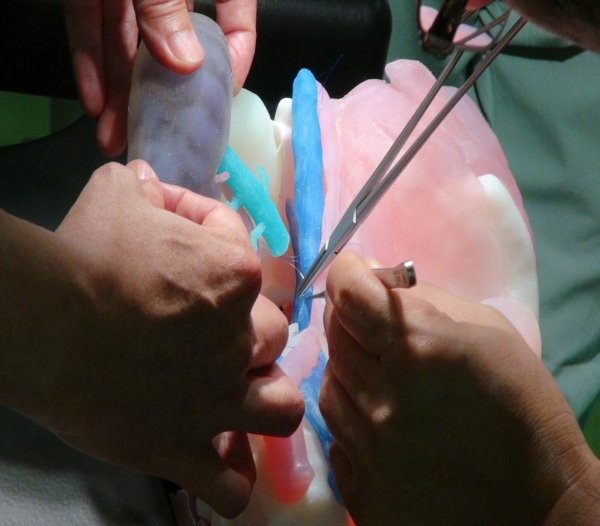Initial Experience With a Tailor-Made Simulation and Navigation Program Using a 3D Printer Model of Kidney Transplantation Surgery
1Department of Urology, Fujita-Health University School of Medicine, Toyoake, Aichi, Japan
2Department of Gastroenterology, Kobe University Graduate School of Medicine, Kobe, Hyogo, Japan
3Department of Organ Transplant Surgery, Fujita-Health University School of Medicine, Toyoake, Aichi, Japan.
Meeting: 2015 American Transplant Congress
Abstract number: 101
Keywords: Kidney transplantation, Nephrectomy
Session Information
Session Name: Concurrent Session: Kidney: Living Donor Issues I
Session Type: Concurrent Session
Date: Sunday, May 3, 2015
Session Time: 4:00pm-5:30pm
 Presentation Time: 4:48pm-5:00pm
Presentation Time: 4:48pm-5:00pm
Location: Terrace IV
Introduction: Three-dimensional (3D) printing systems allow for the creation of surgical models mimicking real tissue. We developed a kidney graft and pelvic cavity replica as a patient-specific 3D model using a 3D printing system with simultaneous jetting of different materials and subsequently evaluated the usefulness of surgical simulation and navigation of living kidney transplantation. Methods: After generating an STL file of the organ surface based on MDCT data, we created a 3D organ model using an inkjet 3D printer and manufactured a pelvic cavity replica using patient-specific data. Results: The patients' individual 3D printed models were used to plan and guide the surgical procedures for laparoscopic donor nephrectomy and recipient transplant surgery. The 3D organ replicas obtained using transparent materials allowed for the creation of models that showed the visceral organs, blood vessels and other details, thereby overcoming the limitations of conventional image-guided navigation. Our pelvic replicas can be made according to each patient's specific anatomical data, thus representing personalized surgical procedures. This level of detail of the anatomy enables the surgeons and trainees to virtually treat various pelvic conditions before they perform the surgical procedure. The use of these replicas may also reduce the length of the operation and provide better anatomical reference tools for tailor-made simulation and navigation of kidney transplantation surgery, consequently helping to improve training for the OR staff, students and trainees. Conclusions: We believe that our sophisticated personalized donor graft and pelvic replications obtained using a 3D printing system are advantageous for kidney transplant surgery.
The use of these replicas may also reduce the length of the operation and provide better anatomical reference tools for tailor-made simulation and navigation of kidney transplantation surgery, consequently helping to improve training for the OR staff, students and trainees. Conclusions: We believe that our sophisticated personalized donor graft and pelvic replications obtained using a 3D printing system are advantageous for kidney transplant surgery.
To cite this abstract in AMA style:
Kusaka M, Sugimoto M, Fukami N, Sasaki H, Takenaka M, Ito T, Kenmochi T, Shiroki R, Hoshinaga K. Initial Experience With a Tailor-Made Simulation and Navigation Program Using a 3D Printer Model of Kidney Transplantation Surgery [abstract]. Am J Transplant. 2015; 15 (suppl 3). https://atcmeetingabstracts.com/abstract/initial-experience-with-a-tailor-made-simulation-and-navigation-program-using-a-3d-printer-model-of-kidney-transplantation-surgery/. Accessed December 19, 2025.« Back to 2015 American Transplant Congress
